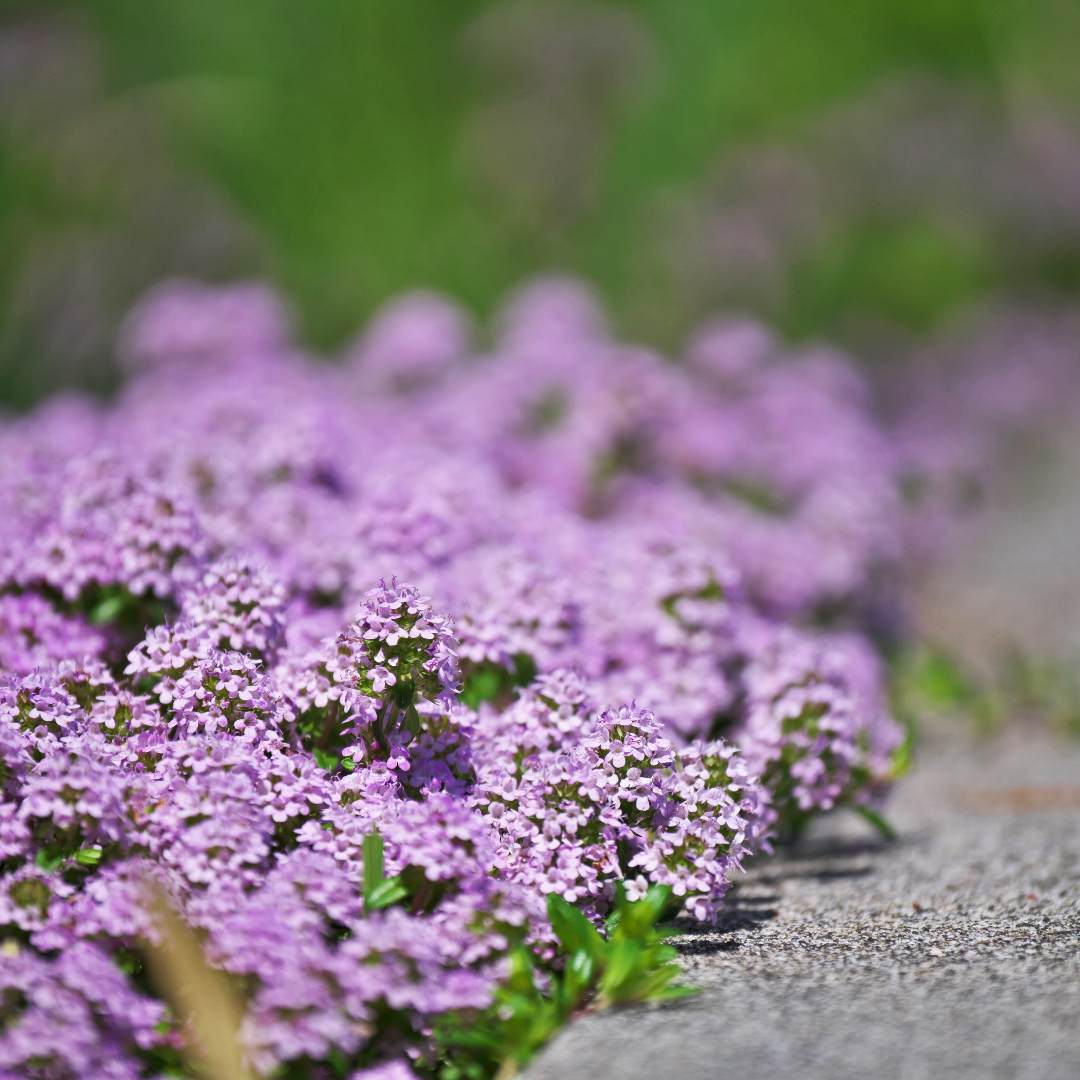I’m not a lover of traditional lawns. In truth, they’re a green desert that devours labour and water with equal zest. Admittedly, they do take a lot of traffic and make a nice place for kids to play. Limiting the lawn to the minimum is not only an environmentally friendly idea but also a labour saver. Entre Thyme Lawn.
Creeping thyme varieties are proving to be a popular alternative. They stay close to the ground, tolerate drought, cold, and some traffic, give off an amazing scent, and are a favourite with bees. Well and good: but how does one go about getting a thyme lawn started? And once it’s up and growing, how should one care for it?
With so many gardeners approaching us with questions about how to grow a Thyme lawn, we decided that it was time to offer this info on our blog. After all, for every enquiry we receive, there are probably 10 people with questions who didn’t get around to asking them!
Let’s get started!
It All Begins With Seed
Unless you’re a Rockerfeller, buying tons of creeping thyme plants to populate your lawn isn’t on the cards. Seed offers an economical and effective alternative. Like so many of the best things in life, patience bears fruit. Thyme seedlings are rather slow-growing, so don’t expect your garden transformation to happen in a matter of a month or two.
First prize is sowing in trays since this allows you better control over the germination process and takes less water. You can keep transplanting into trays or pots, and you can use tip cuttings to multiply your plants as you go.
However, it is possible to sow your seeds directly where they are to grow, and in this case, we’d recommend mixing your seeds with sand to distribute them better and ensuring that there’s no foot traffic while the plants are still small and delicate.
Can You Walk on Creeping Thyme?
We touched on the question of whether one can walk on creeping thyme in the introduction, but let’s give you a few more details. You certainly can walk on creeping thyme, but it isn’t recommended for high traffic areas. I’d suggest using stepping stones to make pathways in the areas where you’re most likely to track back and forth.
When I was a student, our landscaping lecturer warned us that people are like water: they’ll always take the easiest route between two points. So, although curvy pathways can look pretty, they’re less likely to be used if there’s a shorter way between point A and point B. You’ll probably be able to see favoured routes trampled down in your existing lawn. It is worth marking them out and maintaining them as pathways when you replace grass with thyme lawn.
Do You Have to Mow, Weed, and Fertilize Thyme Lawn?
Creeping thyme can get woody and leggy, especially after flowering. While you won’t be mowing nearly as often as you would with a grass lawn, a light mowing (just once over with the mower blades set on the high side) will give them a little rejuvenation.
As for feeding, Thyme is very well adapted to growth in poor soils. That sets you free from the regular fertilizer applications that regular lawns require. If you do decide to feed, use a slow release fertilizer and feed lightly.
Weeding may be a bit of a bugbear during the year so it will take your Thyme lawn to get established. But once it’s growing strongly, creeping Thyme will choke down most weeds at least as effective as grass does.
The biggest task you’ll face will be getting as many of the grassroots out as possible before planting. It’s quite a job, but worth the effort, since it will save you so much work later on. In addition, you get a low-maintenance, fragrant “lawn” in the end, so it’s worth the investment!
Time for Thyme!
In closing, if you’ve decided it’s time to switch to Thyme, take it slowly. Planting your new lawn a patch at a time allows you to do the job well, establishing one small area at a time instead of trying to do the whole lot at once. Each little patch is a small victory, and spreading the work makes it all so much easier.
Get started now, and keep growing those plants until you have the cover you need. Rewarding? You bet! Just imagine the day when you stretch out flat on your back on a patch of soft Thyme and inhale that glorious aroma. It’s an amazing moment and the ultimate reward for your efforts. Imagine it in full flower too: heavenly!
Thyme lawn project anyone?

